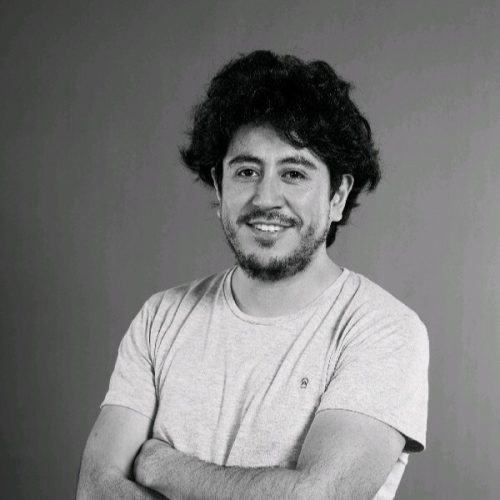Discover the Projects of 2026
These proposals were submitted by the community to make an impact across the video-tech ecosystem.
Community voting has now closed, and the two selected projects were announced live at Demuxed (October 29–30).
From November to January, contributors from around the world will collaborate remotely to build them and showcase the results at Summer Camp 2026.
🏆 Projects selected for Summer Camp 2026
Real-time MoQ and MoQ-JS
This project continues last year’s work on moq-js, focusing on creating a base modular library with sub-packages for transport, WebCodecs, and MSE. The goal is to make these building blocks reusable for developing different types of MoQ-based experiences — from real-time applications like hang.live to low-latency streaming for sporting events — all powered by open infrastructure and modern CDNs.
Tech Sponsors: Mike English & Luke Curley
The Open-Source AI Co-Pilot for Multimedia Archives
This project aims to unlock the collective knowledge of the media industry — from SMPTE standards to decades of technical papers and conference recordings — by creating an AI-powered co-pilot that transforms static archives into intelligent, searchable resources.
Tech Sponsor: Andy Beach
You can join in different ways
CONTRIBUTOR
Join the project to help design, code, or document, every contribution counts toward moving the project forward.
INDUSTRY SUPPORTER
Help us validate the project in a production environment.
The time commitment is part-time and flexible! We understand that most participants have full-time jobs, so contributions can happen in your free time. We usually hold weekly 1-hour check-ins to keep everyone aligned, but there’s no fixed number of hours required.
Why it matters
Because real progress happens when we build together!
The Summer Projects were born from an idea, that open collaboration can move an entire industry forward.
It’s about turning challenges into opportunities, about learning from each other, and about leaving something useful behind for those who come next.
We do this because we believe technology should unite, not divide.
Because when people with curiosity, empathy, and purpose come together, boundaries fade, and possibilities expand.
Automated Video QC and Metadata Validator
Overview
Video workflows often fail because of missing or inconsistent metadata, mis-encoded tracks, or subtle visual issues that manual QC can’t catch efficiently.
This project proposes an open-source automated QC tool that validates video metadata and detects issues early in the pipeline helping broadcasters, CDNs, and streaming platforms ensure quality at scale.

Proposed by: Bhavesh Upadhyaya
Goal & Impact
The tool will scan content for anomalies like desync, missing captions, bad color profiles, or compression artifacts, generating a clear JSON report or optional web dashboard.
By automating QC, it reduces manual review time, increases consistency, and creates a shared validation framework the industry can extend.
Technologies
Python, FFmpeg, PyAV, OpenCV, PyTorch/ONNX, Hugging Face models (speech/lang detection), VMAF, SSIM.
Why it matters
This project democratizes access to reliable QC automation, improving accessibility, speed, and reliability for all parts of the video delivery chain.
VisionBench: Task-Aware Video Encoding Framework (Powered by VQAI)
Overview
VisionBench is an open-source evaluation harness designed to answer a simple but urgent question: how should we encode video when the consumer is an AI model, not a human?
While today’s encoding pipelines optimize for human perception (using metrics like VMAF or SSIM), those same videos feed machine-learning tasks, and what “looks good” to a person can confuse a model.


Proposed by: Barry Owen & Jun Heider
Goal & Impact
VisionBench introduces a new benchmark called VQAI (Video Quality for AI), measuring how encoding settings affect AI task accuracy across detection, tracking, and recognition.
By providing reproducible pipelines and a common evaluation framework, VisionBench lowers experimentation costs, enables standardized comparisons, and helps both researchers and industry teams optimize video for machine vision, not just human eyes.
Technologies
FFmpeg, libvmaf, Python, PyTorch/TensorFlow/ONNX, OpenVINO, MLflow, DVC, Ray, Streamlit/Gradio.
Includes AI-assisted coding tools like GitHub Copilot or LangChain agents to accelerate development and testing.
Why it matters
It bridges human QoE and AI-QoE, providing the first open, task-agnostic benchmark for “video for machines”, a foundation for future research and smarter encoding strategies across the ecosystem.
Real-time MoQ: A Web Conferencing Client on Media over QUIC
Overview
This project explores building a real-time conferencing platform powered entirely by the emerging MoQ (Media over QUIC) standard.
It aims to reach functional parity with WebRTC, then go beyond it by introducing flexible, customizable conferencing features that traditional protocols can’t easily offer.

Proposed by: Luke Curley
Goal & Impact
The objective is to develop a MoQ-based client that can publish and consume real-time media in multi-user rooms, with enterprise-grade features like recording, grid layouts, chat history, and moderation tools (e.g., hand-raising).
By removing the rigidity of WebRTC, this project opens the door for new types of interactive, low-latency applications built on open infrastructure and modern CDNs.
Technologies
TypeScript, WebTransport, WebCodecs, WebAudio, WebGPU, Rust (for relay server), transformer.js for on-device AI.
Why it matters
It expands what’s possible with MoQ, proving that open standards can power real-time collaboration, more scalable, adaptable, and transparent than ever before.
Smarter Live Captions for Web Players
Overview
Live captions are essential for accessibility but still cause major usability challenges, they often overlap visuals, move too fast, or lag behind the audio.
This project proposes building an open-source extension for web video players that rethinks how live captions are displayed and controlled.

Proposed by: Scott Kellicker
Goal & Impact
The goal is to give users better control over caption behavior — from placement and justification to word flow and speaker identification — and to provide a dedicated transcription window for improved readability.
With nearly 20% of the global population experiencing some level of hearing loss, improving caption usability isn’t just technical, it’s human.
Technologies
Web player extension (JavaScript), subtitle rendering and parsing libraries, accessibility standards compliance.
Why it matters
A small but powerful change that can make streaming more inclusive, flexible, and user-friendly for millions of viewers worldwide.
TAMS Reference Player
Overview
TAMS (Time Addressable Media Store) is emerging as a powerful standard for managing large media archives — but the community lacks a reference implementation to explore its potential.
This project proposes building an HTML5 TAMS reference player that demonstrates frame-accurate playback, precise segment navigation, and live-edge tracking for recordings in progress.

Proposed by: Steve Strong
Goal & Impact
By open-sourcing Norsk’s existing prototype and extending it into a community-maintained tool, this project aims to give developers and organizations a clear model of how to integrate and visualize TAMS-based content.
It will accelerate adoption, experimentation, and feedback for this promising new storage format.
Technologies
TypeScript, HTML5, WebCodecs, TAMS API.
Why it matters
A solid, shared reference player makes the TAMS ecosystem accessible — enabling better interoperability and innovation around next-generation media storage.
AI Scene Metadata for Smarter Playback
Overview
AI-driven scene analysis can already identify objects, actions, and semantic context within video but there’s no shared format to transport that data through the workflow.
This project proposes defining an open baseline for AI Scene Metadata, enabling standardized transport, synchronization, and playback integration across players and tools.

Proposed by: Gabriel Dávila
Goal & Impact
The initial goal is a player-side proof of concept demonstrating how AI-generated metadata can be embedded and used in real time, via EMSG, ID3, WebVTT, or JSON sidecars, to enable scene-aware overlays, chapters, and contextual interactions.
Future iterations could connect this metadata to CMS systems, analytics tools, or ad insertion platforms.
Technologies
JavaScript/TypeScript, JSON/CSV, HLS/DASH, EMSG, ID3, WebVTT, Bitmovin PWX Web SDK.
Why it matters
By promoting interoperability and open standards, this project builds the bridge between AI content understanding and richer, smarter playback experiences.
The Open-Source AI Co-Pilot for Multimedia Archives
Overview
The video industry’s collective knowledge — from SMPTE standards to decades of technical papers and conference recordings — remains difficult to access and navigate.
This project aims to create an AI-powered co-pilot that transforms static archives into intelligent, searchable resources.

Proposed by: Andy Beach
Goal & Impact
The prototype will ingest and index large volumes of text, audio, and video; enable semantic and multimodal search with transparent source citations; and provide tiered access for public users, members, and staff.
The outcome will be a functional proof of concept that SMPTE and others can build upon, using open-source code while preserving proprietary data.
Technologies
Generative AI (LLMs), semantic search, video understanding models, multimodal embeddings.
Why it matters
It modernizes how the industry accesses and preserves its own knowledge, turning decades of static content into living, searchable intelligence.
MoQ-JS: From Prototype to Production
Overview
Following the success of last year’s Summer Project, this proposal continues the evolution of moq-js — the open-source JavaScript implementation of Media over QUIC.
The goal is to transform it from a working prototype into a production-ready solution for large-scale deployments.

Proposed by: Mike English
Goal & Impact
Key focus areas include adding DRM support to enable secure streaming for premium content, and integrating telemetry using CMCDv2 to provide operators with operational insights.
The findings will be contributed back to the standards community, helping define best practices for real-world MoQ deployments.
Technologies
JavaScript, MoQ, DRM integration, telemetry frameworks, CMCDv2.
Why it matters
This project strengthens the foundation for the next generation of internet-scale, low-latency streaming, built on open standards and shared innovation.
WebCodecs Video Player for OTIO Editing Files
Overview
This project proposes the creation of a WebCodecs-based video player designed for real-time preview and frame caching of OTIO (OpenTimelineIO) video editing files directly in the browser.
By leveraging the emerging WebCodecs API, the tool aims to make web-based video editing faster, lighter, and more accessible to creators, enabling real-time playback and frame-accurate editing without relying on heavy native applications.

Proposed by: Robin Guignard-Perret
Goal & Impact
The project’s goal is to improve creative workflows for editors, developers, and post-production teams by offering a reliable and open-source player that supports the preview and synchronization of OTIO timelines.
This would make collaborative editing in the cloud more practical, bridging the gap between professional tools and lightweight browser-based environments.
Technologies
WebCodecs, TypeScript, video decoding and caching, browser APIs.
Why it matters
By combining WebCodecs and OpenTimelineIO, this project lowers the barrier to entry for video editing tools on the web — empowering open innovation in post-production, real-time editing, and media accessibility.
It contributes to the broader goal of making creative and technical workflows in video technology more interoperable and inclusive.
Make an impact, together
Whether you’re a developer, engineer, or a curious person, this is a chance to grow, give back, and share the ride with others who care about the future of video-tech.
Learn from peers while building something real and useful
Connect with the global media-tech community
Explore and test new ideas in a safe, collaborative space
Get visibility at meetups like Demuxed or during Summer Week in Montevideo
Ready to participate in the most voted project?
3 months of collaboration (Nov–Jan), with flexible, async work and one weekly sync to keep things moving and aligned.
Open-source impact: Projects must be public, documented, and aimed at the media & video ecosystem.

